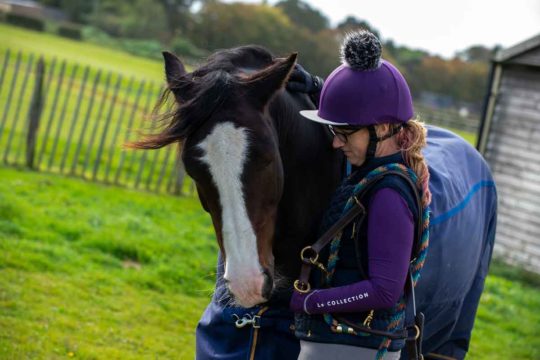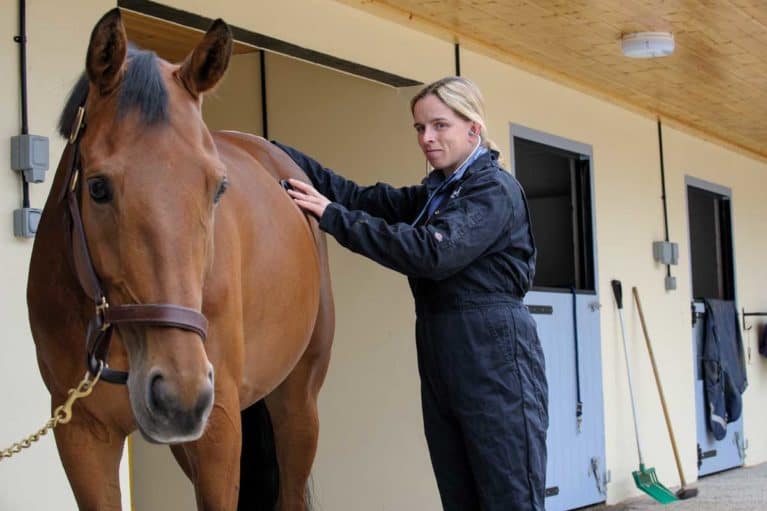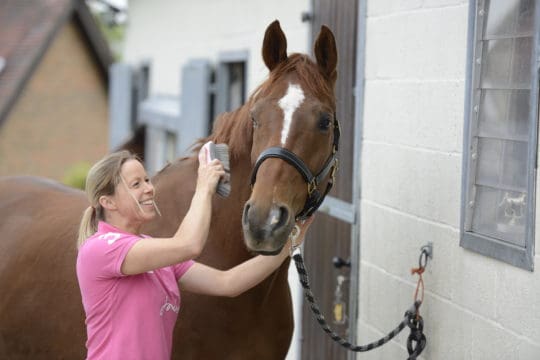
Most Read Articles
Arthritis comes out on top as Petplan Equine reveals its top five most claimed-for conditions of 2019
Posted in News

The recent release of Petplan Equine’s top five most claimed-for conditions of the previous year show an overall rise in claims every year as well as an interesting trend in what policy holders are claiming for. The results show claims for gastric ulcers, colic and laminitis, three of the five most claimed-for conditions, peaking in May, suggesting owners need to be more vigilant during the spring months. These three conditions made up more than 16% of payments in May 2019.
Petplan Equine’s veterinary expert, Gil Riley, said of the findings: “As a vet, I’d expect seasonal peaks for some conditions, but looking at three years of claim figures side by side shows how important the month of May is in the care of our horses. For three out of the five most claimed-for conditions to peak at the same time is concerning and we need to be very aware of how the changes we make to our horses’ management in the spring can affect them.”
“I’ve always advised clients to make any changes to their horses’ routines gradually, but after looking at this data I would emphasise it even more so. I would ask all horse owners to be more watchful now and for those who don’t have access to their horses if their yard is closed, talk to your yard owner about making any changes slowly. It will certainly be interesting to see the figures for 2020 and how they compare against previous years with the additional factor of COVID-19 coinciding with Spring,” Gil added.
The top five conditions of 2019 were…
- arthritis Topping the list for the first time in three years, arthritis has seen an increase of more than 8% paid out from 2018. “The most common form of arthritis is degenerative caused by the wear and tear to joints,” explains Gil. “It’s a condition that can be managed successfully and we can often continue to enjoy riding our horses for years after diagnosis. We may, however, have to lower the level of exercise or change the activity we undertake. By paying close attention to how and where we exercise them along with veterinary care and medication where required, our horses can remain comfortable and pain free.” She says. “Exercise is so important for horses with arthritis – we often say that too little exercise is more damaging to the joints than too much. Gentle concussion stimulates healing, as well as promoting the production of healthy joint fluid and cartilage. Perhaps one of the most important things to watch out for is weight. If he’s overweight, the impact on his joints is increased and the likelihood of arthritis will increase. So, keeping your horse active and a healthy weight is essential to his wellbeing,” concludes Gil.
- gastric ulcers Often experiencing another peak towards the end of the year, Gil explains: “This may be a result of changes in feeding and more restricted turnout going into the shorter days of winter, and once again points towards changes in the management of our horses as the likely cause of these issues.”
- colic or abdominal pain Much like gastric ulcers, we often see another surge in cases towards the end of the year. Management changes are likely to blame according to Gil, who firmly believes it’s more important than ever to take our time when making changes to our horses’ routines.
- desmitis “Standing in fourth place, desmitis is a frequently encountered condition,” explains Gil. “It means inflammation of a ligament and the two types of we most commonly see are that of the suspensory ligament (both fore and hind limb) and the supportive ligaments in the coffin joint. Diagnosis of coffin joint Desmitis often requires MRI scans and can be a frustrating condition to treat. However, close attention to balancing of the feet and remedial shoeing, along with medical treatment of the joint, can yield good results.”
- laminitis Usually most common in early autumn due to a late flush of grass, the numbers of claims due to laminitis have levelled off. Gil puts this down to a better understanding of the condition and better management of our horses’ diets, worming programmes and turnout as a result. She also attributes this reduction of cases to the diagnosis and successful treatment of pituitary pars intermedia dysfunction (PPID).
“At Petplan Equine we want our customers to have confidence that, should something happen to their horse or pony, they have insurance cover to rely on when they need it,” commented Kate Hopkins, Marketing Consultant for Petplan Equine. “Seeing the impact of changes to our horses’ management in the spring highlights the necessity of being aware and making alterations very gradually. The chances of our customers making a claim for at least one of the top five conditions is high, but they can count on Petplan Equine to help with diagnostics and treatment up to the level of their veterinary fee cover with no hidden limits. Our customers’ horses are like members of the family, so we’re always here to reassure and support them whenever we are needed.”













